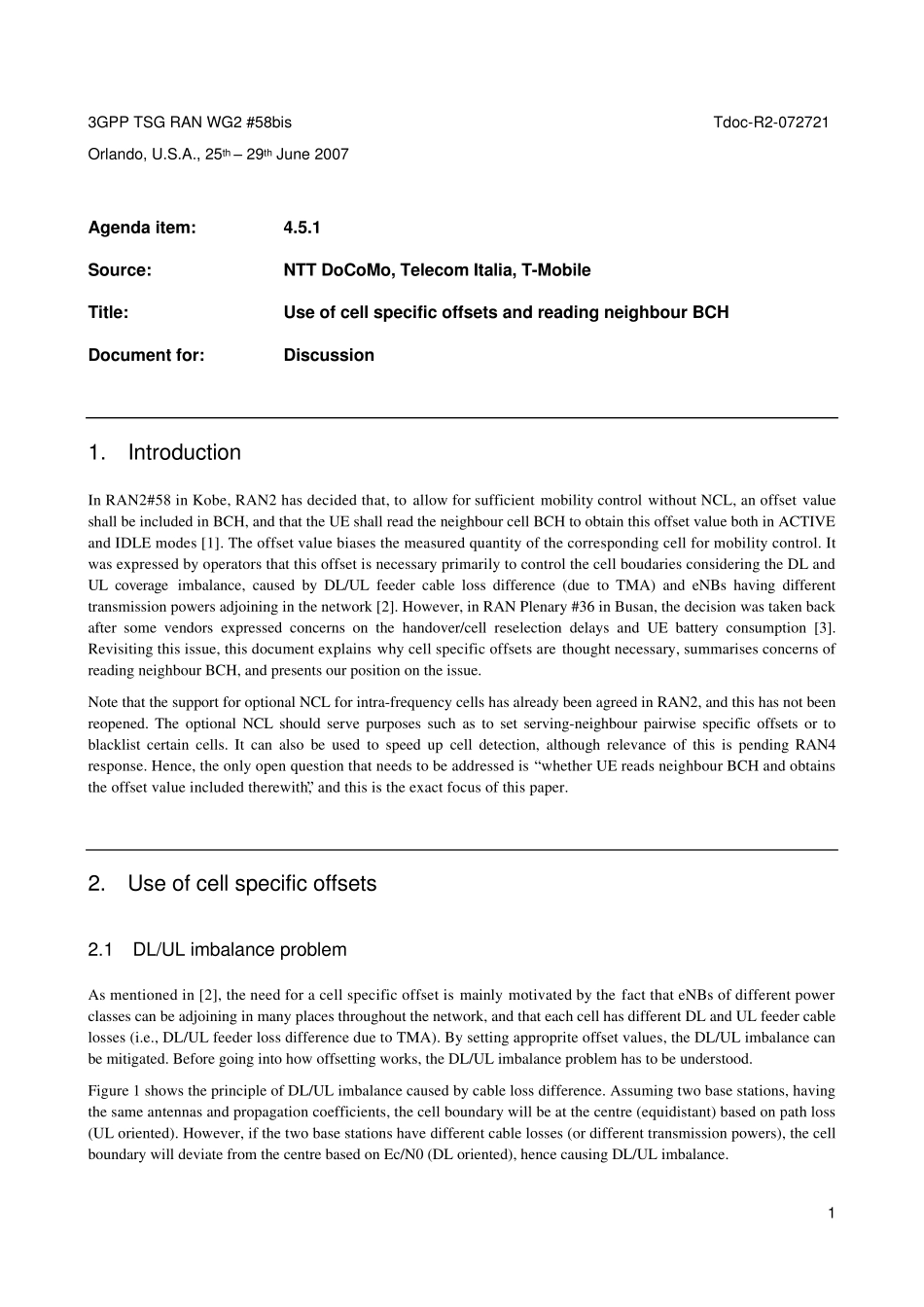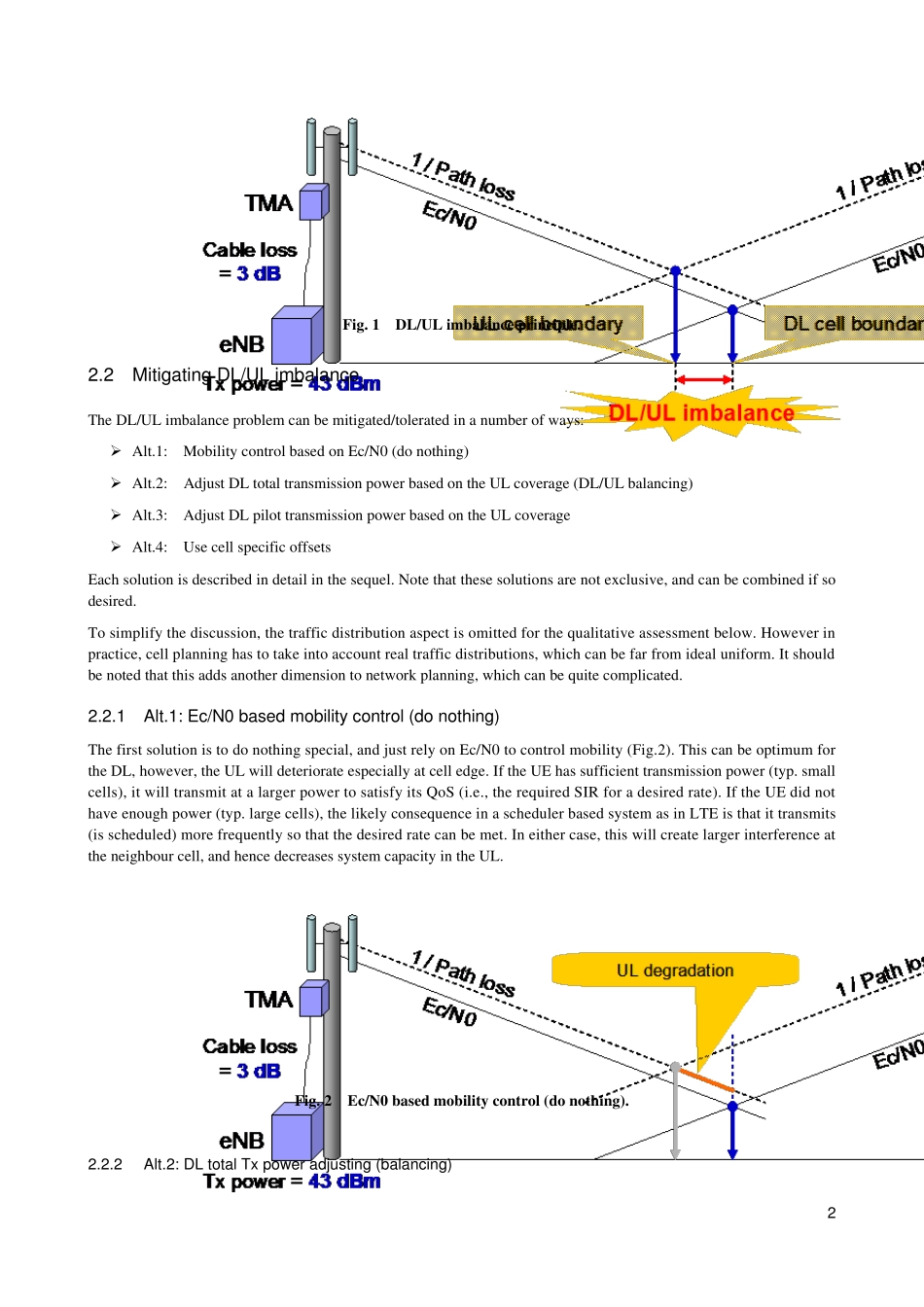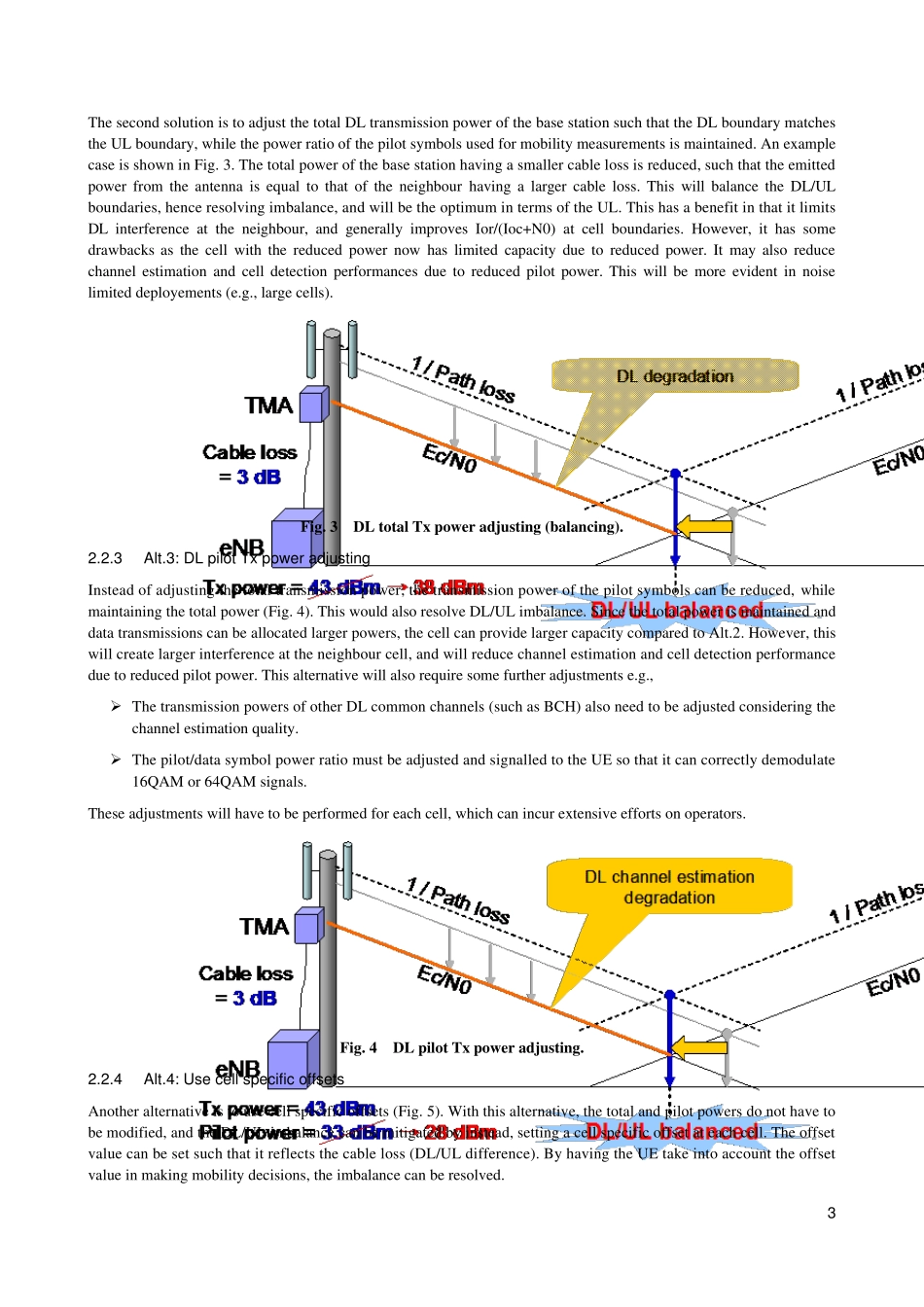1 3GPP TSG RAN WG2 #58bis Tdoc-R2-072721 Orlando, U.S.A., 25th – 29th Ju ne 2007 Agenda item: 4.5.1 Sou rce: NTT DoCoMo, Telecom Italia, T-Mobile Title: Use of cell specific offsets and reading neighbou r BCH Docu ment for: Discu ssion 1. Introdu ction In RAN2#58 in Kobe, RAN2 has decided that, to allow for sufficient mobility control without NCL, an offset value shall be included in BCH, and that the UE shall read the neighbour cell BCH to obtain this offset value both in ACTIVE and IDLE modes [1]. The offset value biases the measured quantity of the corresponding cell for mobility control. It was expressed by operators that this offset is necessary primarily to control the cell boudaries considering the DL and UL coverage imbalance, caused by DL/UL feeder cable loss difference (due to TMA) and eNBs having different transmission powers adjoining in the network [2]. However, in RAN Plenary #36 in Busan, the decision was taken back after some vendors expressed concerns on the handover/cell reselection delays and UE battery consumption [3]. Revisiting this issue, this document explains why cell specific offsets are thought necessary, summarises concerns of reading neighbour BCH, and presents our position on the issue. Note that the support for optional NCL for intra-frequency cells has already been agreed in RAN2, and this has not been reopened. The optional NCL should serve purposes such as to set serving-neighbour pairwise specific offsets or to blacklist certain cells. It can also be used to speed up cell detection, although relevance of this is pending RAN4 response. Hence, the only open question that needs to be addressed is “whether UE reads neighbour BCH and obtains the offset valu...


